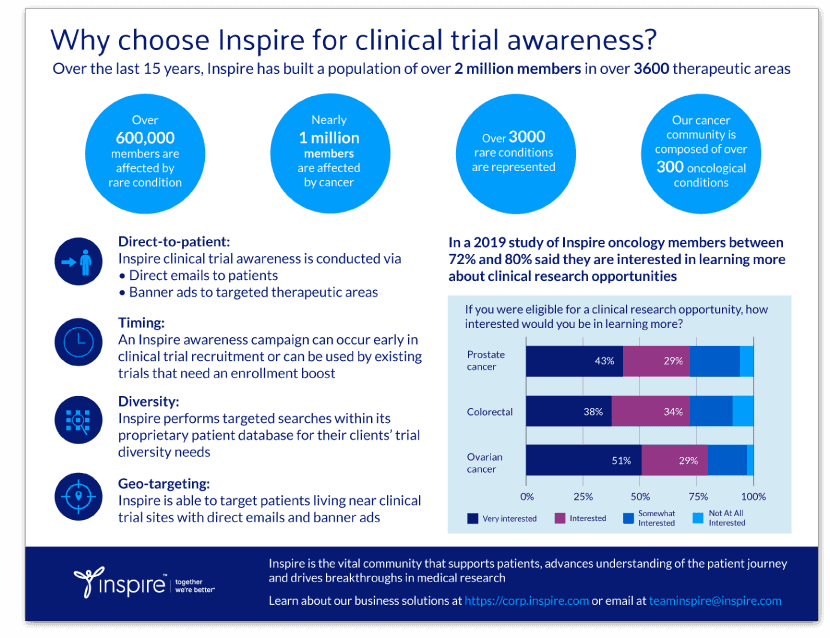Beating back chronic myelogenous leukemia

By Kathleen Hoffman, PhD, MSPH
A patient feels fine, but a routine complete blood count (CBC) test reveals an unusually high white blood cell count. High white blood cell counts may result from many conditions, but if it’s accompanied by other signs such as high or low platelet counts and anemia, further tests may reveal that the patient has Chronic Myelogenous Leukemia, or CML. CML is a blood cancer that starts in the bone marrow and results in an overgrowth of damaged white blood cells. Most people’s diagnosis begins after a routine CBC and while they are asymptomatic.1,2
This relatively rare disease (about 9,000 new cases per year in the US, or 1 in 526 people) mostly occurs in mature adults, with the average age of diagnosis at 64.3 A mutation turns chromosome 22 into a “Philadelphia chromosome,” meaning it produces an abnormal protein, BCR-ABL, that creates the defect leading to leukemia. Over 95% of CML patients carry the Philadelphia chromosome, with the minority of others expressing the BCR-ABL protein without showing it. The defect is revealed using cytogenetic analysis. Discovering the Philadelphia chromosome in 1960 eventually led to creating a genetically targeted drug, imatinib, in 2001.4,5
How CML has been treated
Because BCR-ABL is a tyrosine kinase, tyrosine kinase inhibitor therapies are used to combat the disease. Imatinib was the first-generation TKI targeting BCR-ABL, and it has been followed by other approved drugs, including the second-generation treatments dasatinib, nilotinib, and bosutinib, followed by third-generation ponatinib.6
While these drugs revolutionized the treatment of CML, there are problems with medication tolerance. Some patients may develop resistance over time. When or if one TKI isn’t tolerated well, is not effective, or if the patient relapses, the patient is usually given a second TKI.7 Sometimes medication loses effectiveness when BCR-ABL mutates. The T315I mutation accounts for about 20% of the clinical resistance to TKIs, and ponatinib has been one TKI that targets that mutation, but comes with a risk of cardiac adverse effects.8,9
I have been Living with CML for almost __number__ years now. I am doing very well… I like to be able to help others, especially newly diagnosed people who have no idea what to expect.
Believe or not..I’ve had CML for over __number__ years now and I never wanted to know anything about what I have CML, but since this new development in my cancer I’ve been checking into it now, so this is all new to me too.
Everybody is different with this drug, and if you have been on it since __date___ the side affects won’t get worse, if anything you’ll get better. I had so much stress in my life after I was diagnosed that I believe that’s why I didn’t go into remission. I’ve been on all 3 chemo on the market now, and right when this 3rd chemo stopped working another one was just approved, just in time …
New Drug, New Point of Attack
The T315I mutation became an obvious target for drug development to address drug resistance and the problems with tolerance. On October 29, 2021, the FDA approved a new drug, asciminib, for the treatment of chronic myeloid leukemia (CML) in two distinct indications.
The FDA granted accelerated approval for asciminib for treating CML in Philadelphia-positive adult chronic CML patients who have been previously treated with two or more TKIs. This approval was based on the results of clinical trials showing it provided a Major Molecular Response (MMR) in 25% of the test patients, as opposed to 13% in patients receiving another approved drug, bosutinib. Major molecular response MMR “means that the amount of BCR-ABL gene in your blood or bone marrow is 1/1000th (or less) of what’s expected in someone with untreated CML,” according to the American Cancer Society.10
In an exciting development, however, the FDA granted full approval for adult patients with Philadelpha-positive chronic CML with the T315I mutation, after a different trial found that MMR was achieved in 24 weeks in 42% of the patients, and achieved by 49% at 96 weeks. The patients continued use until they couldn’t tolerate the drug or the drug failed, and the median duration of treatment was 108 weeks. The drug was well-tolerated for a long term by almost half of the patients.
Asciminib is also a TKI inhibitor, but it has a novel method of action. It binds to a different area, specifically targeting the myristoyl pocket on the ABL1 gene, which also results in tyrosine kinase inhibition but with action on the T315I mutation. According to Jose Cortez, MD, Director of the Georgia Cancer Center, “…the efficacy and safety of asciminib raises the possibility that it could be used earlier, perhaps in patients previously treated with one or two TKIs. When a patient’s initial therapy is a second-generation TKI, there are not many treatment options afterward. Asciminib might be useful in this setting. It might even be useful as first-line therapy.”11
Conclusion
With the development of TKIs to treat CML, a diagnosis that was previously grim became manageable, but the issue of challenging refractory cases remains. Ongoing developments, including the approval of asciminib, are giving these patients new options. There are 137 clinical trials listed on clinicaltrials.gov currently recruiting for test subjects with CML.12
Inspire offers a trusted community to patients and caregivers. Our goal with this blog, this website and our content is to provide the life science industry access to the true, authentic patient voice. In so doing, we support faithful operationalization of patient-centricity. Take a look at our case studies, eBooks and news outlet coverage.
References:
1 https://www.cancer.org/cancer/chronic-myeloid-leukemia/about/what-is-cml.html
2 https://www.cancer.net/cancer-types/leukemia-chronic-myeloid-cml/diagnosis
3 https://www.cancer.org/cancer/chronic-myeloid-leukemia/about/statistics.html
4 https://www.lls.org/sites/default/files/National/USA/Pdf/Publications/PS31_CML_Booklet_2017_FINAL_December2017_Insert.pdf
5 https://www.pennmedicine.org/news/publications-and-special-projects/the-research-legacy-of-penn-medicine/chromosome
6 https://www.cancer.gov/types/leukemia/patient/cml-treatment-pdq
7 https://www.cancer.org/cancer/chronic-myeloid-leukemia/treating/targeted-therapies.html
8 https://www.sciencedirect.com/science/article/pii/S2213048919300470
9 https://www.ncbi.nlm.nih.gov/pmc/articles/PMC6399752/
10 https://www.cancer.org/cancer/chronic-myeloid-leukemia/treating/is-treatment-working.html
11 https://www.hematologyandoncology.net/archives/april-2021/asciminib-for-the-treatment-of-patients-with-chronic-myeloid-leukemia/
12 https://clinicaltrials.gov/ct2/results?cond=CML&term=&cntry=&state=&city=&dist=&recrs=a






